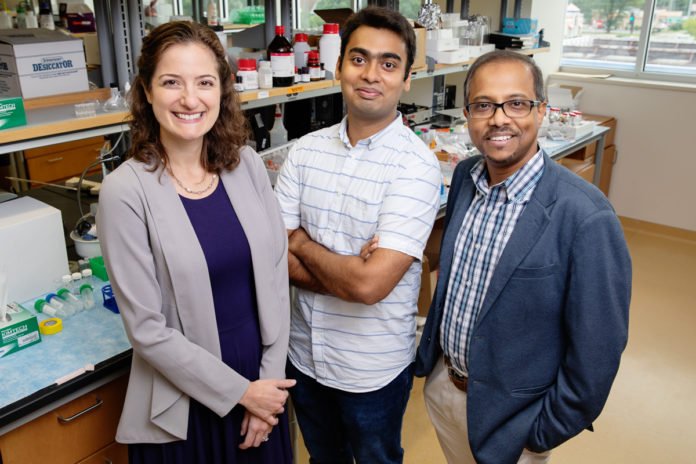University of Illinois researchers developed a new point-of-care rapid-sensing device that can detect a key marker of eye injury in minutes. The device is nothing but a gel laden with gold nanoparticles that change color when it reacts with a teardrop containing ascorbic acid, released from a wound to the eye.
Scientists used the sensor, called OjoGel, to measure ascorbic acid levels in artificial tears and in clinical samples of fluid from patients’ eyes.
Study leader University of Illinois professor of bioengineering said, “We expect a significant potential impact of this biosensor for evaluating the eye in post-surgical patients as well as trauma patients.”
Dr. Leanne Labriola, an ophthalmologist at Carle Foundation Hospital in Urbana said, “OjoGel technology may allow for faster identification of serious eye injuries. With a rapid point-of-care device such as this, anyone in an emergency department could perform a test and know within minutes if the patient needs urgent surgery to save their vision.”
Ascorbic acid, also known as vitamin C, is found in high concentrations in the fluid inside the eye, called aqueous humor, but normally has a very low concentration in tears.
A minor teardrop is all that is expected to cause a color-change reaction in the OjoGel. The degree of the color change relates to the concentration of ascorbic acid in the tear test, moving from light yellow to a dark brown as the concentrations increments.
The scientists did broad testing to decide the fixations related to every level of color-change. They built up a color key and rules for utilizing a cell phone application, Pixel Picker, to exactly quantify the concentration shown by a responded gel test.
Scientists are now planning to refine the technology in order to produce a low-cost, easy-to-use clinical device. They also will perform clinical studies to determine whether OjoGel readings reliably evaluate eye damage.
Labriola said, “In addition to continuing to develop the technology, in the next year we will be working to help healthcare providers understand the value this new device may bring to their practice over the current methods they use for evaluation.”
The study is published in the journal Biosensors and Bioelectronics.
